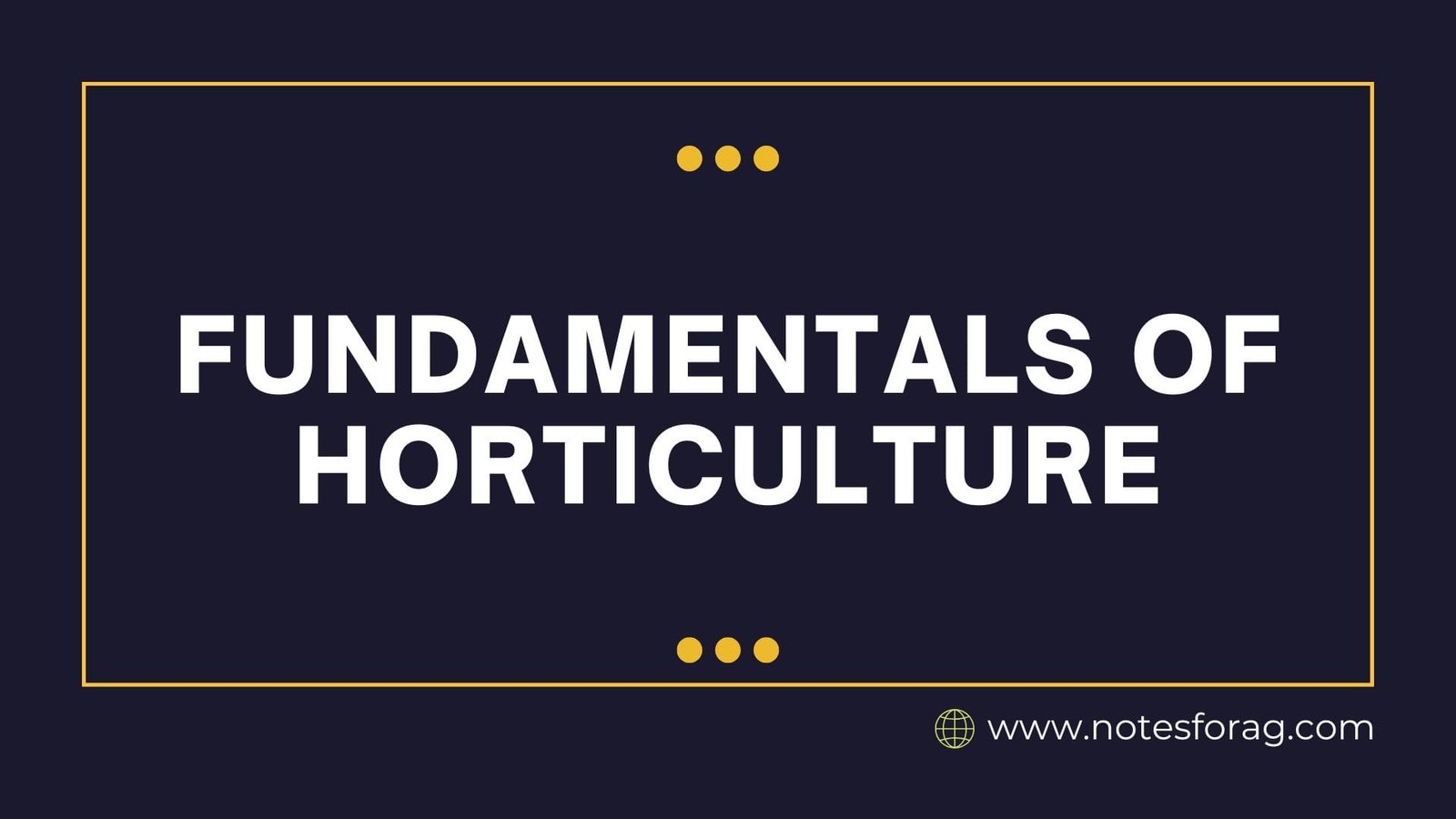Fundamentals of Horticulture is a field of study that encompasses the science and art of cultivating and managing plants, including fruits, vegetables, flowers, ornamental plants, and landscaping. It is a branch of agriculture that focuses on plant growth, reproduction, health, and overall care. Fundamentals of Horticulture encompasses a wide range of activities related to plant growth, including propagation, breeding, crop production, landscape restoration, garden design, and maintenance. Fundamentals of Horticulture involves understanding plant biology, soil science, pest management, and sustainable practices to enhance plant growth, yield, and aesthetic value. Understanding plant growth, environmental factors, and horticultural practices is essential for successful gardening and crop production.
Table of Contents
Fundamentals of Horticulture
Fundamentals of Horticulture includes:
Scope of Horticulture
- Plant Propagation: Techniques for growing plants from seeds, cuttings, and grafting.
- Soil Management: Understanding soil types, fertility, and amendments to support plant growth.
- Post-Harvest Handling: Methods for preserving and storing horticultural products to maintain quality and extend shelf life.
- Pest and Disease Control: Integrated pest management strategies to protect crops from harmful organisms.
Importance of Horticulture
- Food Production: Horticulture plays a crucial role in providing fruits, vegetables, and nuts, contributing to food security and nutrition.
- Economic Value: The horticultural industry generates significant income and employment opportunities worldwide.
- Environmental Benefits: Horticulture promotes biodiversity, improves air quality, and enhances urban landscapes.
- Aesthetic Value: Ornamental horticulture contributes to the beauty of gardens, parks, and public spaces, improving quality of life.
Branches of Horticulture
- Viticulture: The cultivation of grapes, especially for winemaking.
- Pomology: The cultivation of fruit crops.
- Olericulture: The cultivation of vegetables.
- Floriculture: The cultivation of flowers and ornamental plants.
- Landscape Horticulture: Designing and maintaining landscapes.
- Post-harvest Technology: Techniques for processing, storage, and marketing of horticultural produce.
- Arboriculture: The care and management of trees.
Horticultural Classification
- Fruits: Includes categories like pomes (apples, pears), drupes (peaches, cherries), and berries (strawberries, blueberries).
- Vegetables: Divided into leafy (lettuce, spinach), root (carrots, potatoes), and fruiting (tomatoes, peppers) vegetables.
- Ornamentals: Plants grown for decorative purposes, including flowers, shrubs, and trees.
- Herbs: Plants valued for their culinary, medicinal, or aromatic properties.
Plant Growth and Development
- Photosynthesis: The process by which plants convert light into energy.
- Respiration: The release of energy stored in plant cells.
- Transpiration: The loss of water vapor through stomata.
- Propagation: Methods include seed, cutting, grafting, and tissue culture.
- Growth Factors: Light, water, temperature, soil nutrients, and air.
Techniques in Horticulture
- Hydroponics: Growing plants in nutrient-rich water solutions without soil, allows for efficient use of space and resources.
- Aeroponics: A method where plants are grown in an air or mist environment, promoting faster growth and higher yields.
- Organic Horticulture: Focuses on sustainable practices, avoiding synthetic fertilizers and pesticides, and promoting soil health.
- Permaculture: A holistic approach to land management that mimics natural ecosystems, aiming for sustainability and self-sufficiency.
Career Opportunities in Horticulture
- Horticulturists: Professionals who specialize in plant cultivation and management, often working in research, education, or commercial settings.
- Landscape Designer: Experts in creating aesthetically pleasing outdoor spaces, incorporating plants, structures, and environmental considerations.
- Greenhouse Manager: Individuals responsible for overseeing the production of plants in controlled environments, ensuring optimal growth conditions.
- Agricultural Extension Agent: Professionals who provide education and resources to farmers and the community about horticultural practices and innovations.
Conclusion
Horticulture plays a crucial role in improving food security, enhancing the environment, and promoting economic development. Fundamentals of Horticulture combines science, technology, and artistry to cultivate plants that provide nutrition, beautify landscapes, and sustain biodiversity. Understanding the fundamentals of horticulture including plant physiology, soil management, propagation methods, and pest control enables practitioners to optimize plant growth and productivity. Moreover, horticulture addresses environmental challenges by promoting sustainable practices like efficient water use, integrated pest management, and conservation of natural resources.
Frequently Asked Question
What is horticulture?
Horticulture is the branch of agriculture that focuses on the cultivation of plants, including fruits, vegetables, flowers, ornamental plants, and landscaping. Fundamentals of Horticulture involves both the science and art of plant care and management.
Why is horticulture important?
Horticulture contributes to:
Food security: By providing fruits, vegetables, and other crops.
Economy: Generating income and employment.
Environment: Improving air quality and biodiversity.
Mental well-being: Through beautification and therapeutic effects.
What are the common methods of plant propagation?
Sexual Propagation: Using seeds.
Asexual Propagation: Techniques like grafting, cutting, layering, and tissue culture

